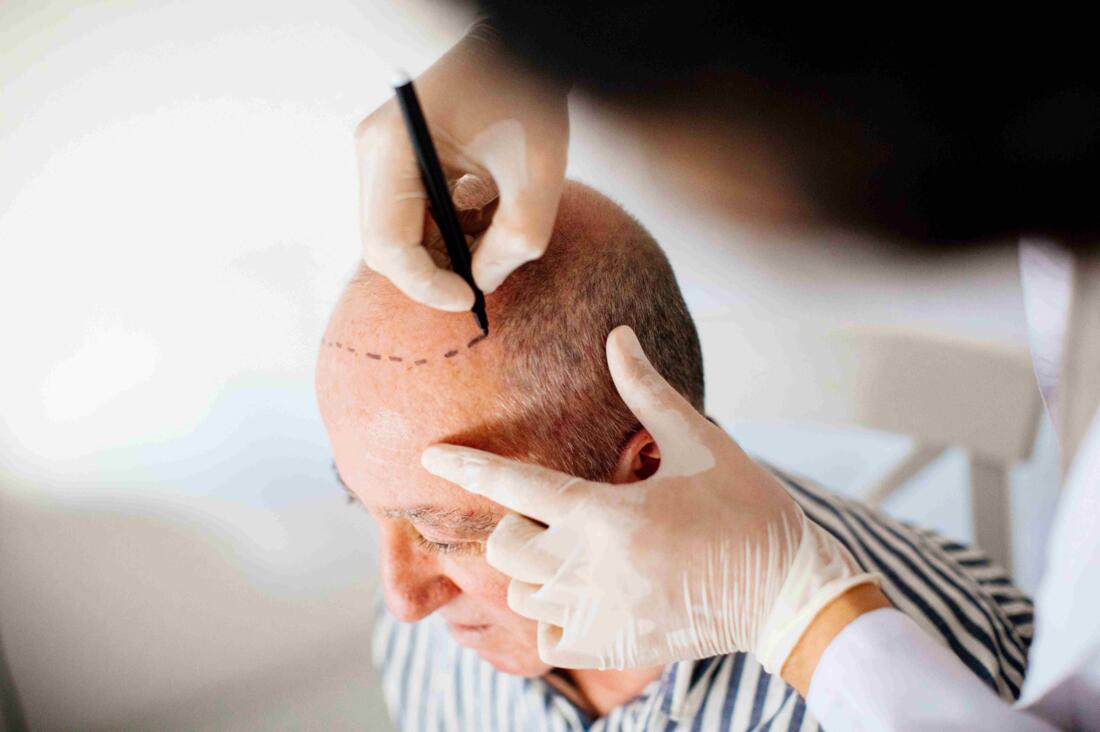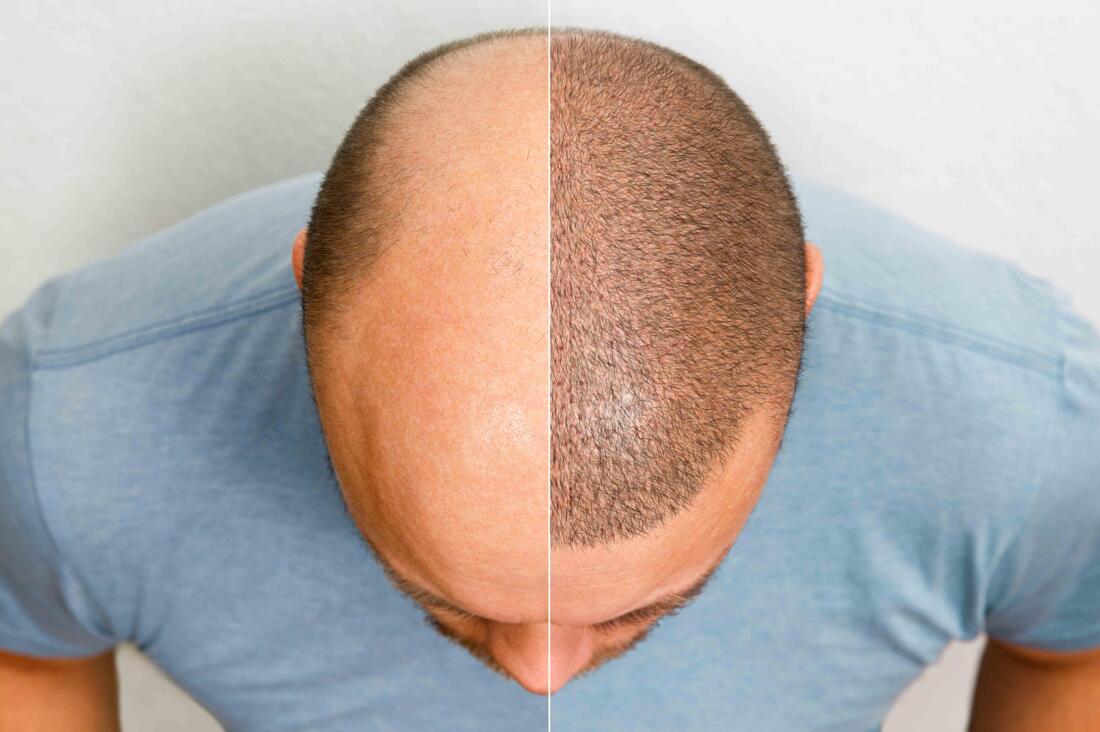Hair loss can be a troubling situation, impacting both the scalp and a person's self-confidence. Thankfully, advancements in hair restoration have provided a glimmer of hope to individuals dealing with this issue.
Overcoming Hair Loss
Advanced hair transplantation methods today are more refined and efficient than in the past, delivering natural-looking outcomes with minimal discomfort. The most preferred techniques, Follicular Unit Extraction (FUE) and Follicular Unit Transplantation (FUT), offer distinctive benefits. Both methods entail the meticulous removal and positioning of hair follicles to guarantee a seamless and natural appearance of new hair growth.

FUE Method
The FUE technique is becoming increasingly popular because it is less invasive and does not leave a linear scar. Instead of using a scalpel or stitches, individual hair follicles are removed directly from the scalp, leading to a faster recovery time and reduced discomfort after surgery. This method also enables precise placement of the hair to mimic the natural growth pattern, resulting in a seamless look with the original hair. Furthermore, improvements in robotic technology have enhanced the accuracy and efficiency of the FUE procedure.

FUT Method
Alternatively, FUT, also known as strip surgery, involves extracting a small strip of tissue from the back of the scalp where hair is resistant to balding. The follicles are then separated and relocated to areas experiencing balding. While this approach may result in a linear scar, it is typically concealed by the patient's existing hair and can be a more cost-efficient choice for those in need of numerous grafts.
Both FUE and FUT boast impressive success rates and can be customized to cater to the specific requirements and desires of each individual. Through these advanced procedures, individuals grappling with hair loss stand a better chance of attaining a full and natural-looking head of hair, thereby not only restoring their hair but also their self-assurance.
Understanding Hair Loss Causes and Patterns
Hair loss can stem from various causes, including genetic factors, hormonal changes, and environmental influences. Male and female pattern baldness is often linked to genetics, where a family history of hair loss increases the likelihood of experiencing similar issues. Additionally, hormonal imbalances, particularly involving androgens, can trigger hair thinning. Environmental factors such as stress, nutritional deficiencies, and certain medical conditions can also contribute. Recognizing the specific cause of hair loss is vital in choosing the most effective treatment and restoration methods tailored to the individual's needs.
The Role of Scalp Health in Hair Restoration
Maintaining a healthy scalp is crucial for successful hair restoration. A well-nourished scalp ensures optimal conditions for hair follicles, promoting healthy growth. Regular cleansing, exfoliation, and moisturizing help remove dead skin cells and excess oil that could inhibit hair growth. Incorporating scalp massages stimulates blood flow, enhancing nutrient delivery to hair follicles. Additionally, natural oils and treatments can soothe irritation, reduce inflammation, and promote overall scalp vitality. By prioritizing scalp health, individuals can create a supportive environment that maximizes the effectiveness of hair restoration procedures.
Post-Procedure Care for Optimal Results
After undergoing hair restoration procedures like FUE or FUT, proper post-operative care is essential for achieving the best outcomes. Patients are typically advised to avoid strenuous activities and direct sunlight for several days following the procedure. Gentle washing of the scalp with mild shampoos is recommended, while harsh chemicals should be avoided. Additionally, adhering to prescribed medications, such as antibiotics and anti-inflammatory drugs, can help mitigate discomfort and prevent infections. Regular follow-ups with the medical team can ensure progress is monitored, and any concerns are addressed promptly, contributing to successful hair regrowth.
Exploring Non-Surgical Hair Restoration Options
Beyond surgical methods, numerous non-surgical hair restoration options are available for those seeking alternatives. Treatments such as platelet-rich plasma (PRP) therapy involve drawing the patient's blood, processing it to concentrate growth factors, and injecting it into the scalp to stimulate hair follicles. Low-level laser therapy (LLLT) is another innovative option that uses light to promote hair growth. Additionally, topical solutions like minoxidil can be effective for certain individuals. These non-invasive methods can be suitable for those who may not qualify for surgery or prefer a less invasive approach to restoring their hair.
The Psychological Impact of Hair Loss
The psychological effects of hair loss are profound and can significantly impact an individual's self-esteem and mental health. Many people experience feelings of embarrassment, anxiety, or depression due to their changing appearance. This emotional struggle often leads to social withdrawal and avoidance of situations where they feel self-conscious. Addressing the psychological aspects of hair loss is crucial, as restoring one's appearance can greatly enhance confidence and overall well-being. Support groups, counseling, and open discussions about hair loss can help individuals navigate these challenges, fostering a sense of community and understanding.
Future Trends in Hair Restoration Technology
As technology advances, the field of hair restoration continues to evolve, presenting exciting possibilities for those affected by hair loss. Innovations such as stem cell therapy are being researched for their potential to regenerate hair follicles. Additionally, advancements in robotic-assisted hair transplants are improving precision and reducing recovery times. Artificial intelligence is also being utilized to analyze hair loss patterns, allowing for more personalized treatment plans. As these technologies develop, they promise to make hair restoration more effective, accessible, and tailored to meet the unique needs of individuals seeking solutions for hair loss.
AI-Assisted Content Disclaimer
This article was created with AI assistance and reviewed by a human for accuracy and clarity.